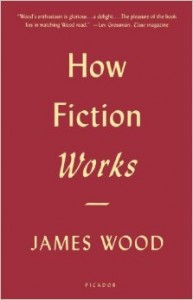 In the tradition of Forster’s Aspects Of The Novel and Kundera’s The Art Of The Novel, Harvard professor and renowned literary critic James Wood has produced his own investigation into fiction’s inner workings, and though he cannot quite boast the firsthand experience of those two titans, he is as good a close reader as any man alive. More than his acuity and perceptiveness, however, I am drawn to Wood for how plainly he communicates his appreciation. To borrow from Keats, Wood looks upon fine phrases like a lover, and this kind of naked enjoyment is always infectious. How Fiction Works is Wood’s attempt to “ask a critic’s questions and offer a writer’s answers,” and from the very first chapter he demonstrates how useful such a method can be to readers and aspiring writers alike.
In the tradition of Forster’s Aspects Of The Novel and Kundera’s The Art Of The Novel, Harvard professor and renowned literary critic James Wood has produced his own investigation into fiction’s inner workings, and though he cannot quite boast the firsthand experience of those two titans, he is as good a close reader as any man alive. More than his acuity and perceptiveness, however, I am drawn to Wood for how plainly he communicates his appreciation. To borrow from Keats, Wood looks upon fine phrases like a lover, and this kind of naked enjoyment is always infectious. How Fiction Works is Wood’s attempt to “ask a critic’s questions and offer a writer’s answers,” and from the very first chapter he demonstrates how useful such a method can be to readers and aspiring writers alike.
The book begins with the more mechanical aspects of fiction writing: narration, speech and style. Each point Wood makes is enforced by an example drawn from his vast readings, and much of the pleasure of this book comes from following his thoughts as they skip from author to author. Jane Austen, Henry James, V.S. Naipaul, Joyce, Nabokov, Updike, Pynchon and David Foster Wallace are conjured to discuss style, particularly with regard to one of the fiction writer’s most pressing questions: at what point does the author’s wording infringe on, and clash with, a character’s thoughts?
When Robert Browning describes the sound of a bird singing its song twice over, in order to “recapture / The first fine careless rapture,” he is being a poet, trying to find the best poetic image; but when Chekhov, in his story “Peasants,” says that a bird’s cry sounded as if a cow had been locked up in a shed all night, he is being a fiction writer: he is thinking like one of his peasants.
Much of the artifice of fiction writing is employed not only to enter into a given character’s mode of thinking (to describe a bird cry as a peasant, rather than a poet, would) but to keep alive that tension between author and character: precisely which words are the author’s, which the character’s? What we call “style” becomes a way of negotiating this tension, with some writers going to absurd lengths to impose their stylistic choices on the reader – Wood gives, as one example, David Foster Wallace’s meandering, paragraph-long sentences – while others follow Flaubert’s famous advice: “An author in his work must be like God in the universe, present everywhere and visible nowhere.”
No contemporary popularizer of literature strikes a better balance between reader and critic, and few authors write more engaging or inventive prose, than James Wood. How Fiction Works is as delightful as it is enlightening, yet another precious glimpse into the mind of an extraordinary reader.